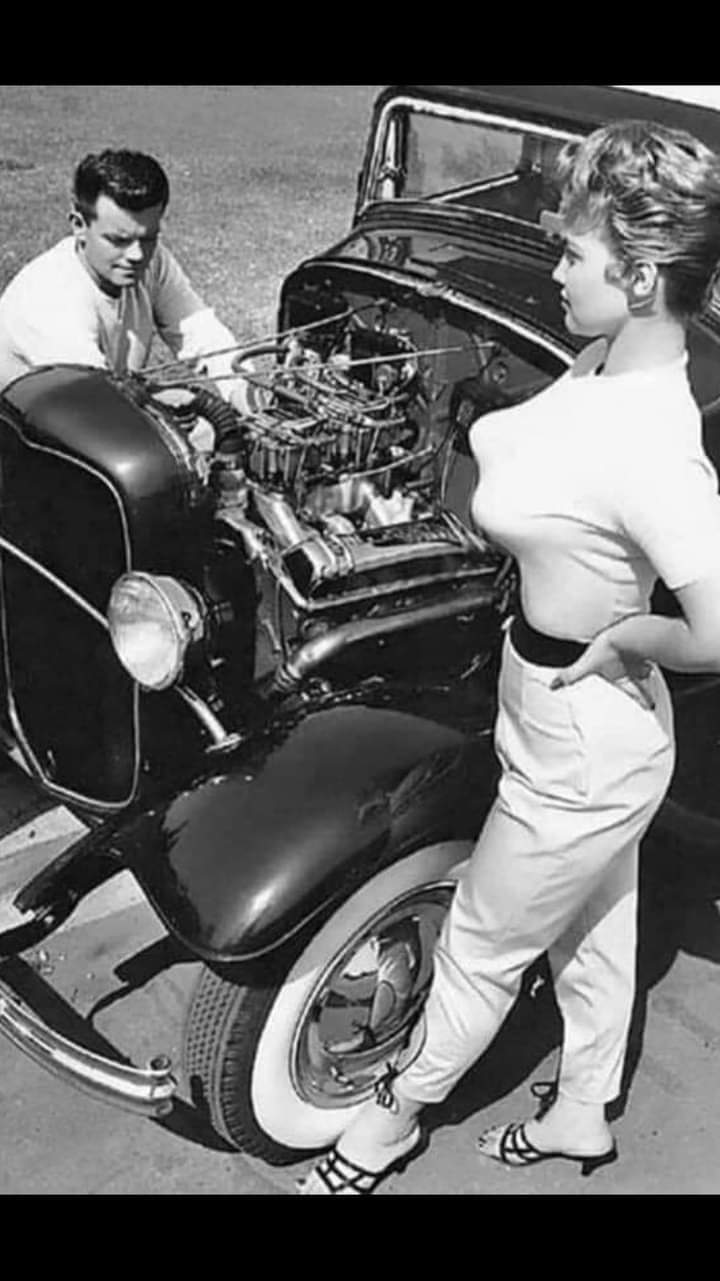Is this Scotts own material or did he get it somewhere?
I don’t know… but I thought the subject was well worth Blogging!
Tim Wikiriwhi.

Scott_Freitas
@Scott_Freitas
·
Classic Cars
·
19h
“Wire bras”, often called bullet bras or torpedo bras, were iconic undergarments of the 1940s and 1950s, with their popularity extending into the early 1960s. They created a distinctive conical, pointed silhouette that became synonymous with the era’s fashion, particularly the “sweater girl” look.
Bullet bras first appeared in the early 1940s during World War II, with the Perma-Lift brand introducing one of the earliest versions in 1941. The conical shape was achieved through spiral stitching or concentric stitching in the cups, which provided structure without underwires in many early designs.
Why the Shape?: The pointed silhouette was designed to lift and separate the breasts, creating a dramatic, high-profile bust that complemented the hourglass figure idealized in the post-war 1950s. The stitching pushed breast tissue upward and outward, accentuating a sharp, conical shape. This was a stark contrast to the flatter, more natural looks of the 1920s and 1930s.
Materials and Construction: Early bullet bras were made with materials like cotton, nylon, or satin, often with minimal stretch compared to modern bras. Some later designs incorporated underwires, which became more popular in the 1950s for added support. Pads or “falsies” were sometimes used to fill out the cones, especially for women whose natural shape didn’t fully fill the exaggerated cups.
The terms “bullet bra” and “torpedo bra” weren’t official marketing names but slang that stuck due to the wartime context (e.g., bullets and torpedoes were common imagery). The pointed shape was likened to military projectiles, reflecting the era’s cultural influences.
The bullet bra became iconic thanks to Hollywood stars like Lana Turner, Marilyn Monroe, Jayne Mansfield, and Jane Russell, who wore tight sweaters or dresses over bullet bras, earning the nickname “sweater girls.” Lana Turner was dubbed the original sweater girl after her role in the 1937 film They Won’t Forget, though the trend peaked in the 1950s. These actresses made the exaggerated bust a symbol of glamour and femininity.
Post-War Femininity: After World War II, when women had taken on more masculine roles in factories, the 1950s saw a cultural push toward hyper-feminized ideals. The bullet bra, paired with corsets and girdles, helped create the coveted hourglass figure, emphasizing a narrow waist and prominent bust.
Pin-Up Culture: Bullet bras were a staple in pin-up photography, boosting morale for soldiers during WWII. Actresses and models like the Wilde Twins appeared in magazines like Yank wearing bullet bras under tight clothing, cementing their provocative yet “wholesome” appeal.
Controversy: While bullet bras were celebrated for their glamour, they also sparked debate. Their suggestive silhouette clashed with the era’s “good girl” persona, and some saw them as overly provocative. By the late 1960s, feminist movements criticized bras in general as tools of patriarchal oppression, with some women burning them in protest (though the “bra-burning” trope was exaggerated by critics).
Trivia and Fun FactsExaggeration for Effect: The most extreme bullet bras, like those worn by sweater girl models, were often padded to an absurd degree for photoshoots, creating the “traffic cone” look you mentioned. Everyday women typically wore less dramatic versions that still gave a lifted, conical shape without being as cartoonish.
Madonna’s Revival: The bullet bra saw a pop culture resurgence when Madonna wore a Jean Paul Gaultier-designed bullet bra during her 1990 Blond Ambition tour. This brought the retro silhouette back into the spotlight, blending vintage with avant-garde fashion.
Brand Pioneers: Besides Perma-Lift, brands like Maidenform and Playtex were major players in producing bullet bras. Maidenform’s designs were particularly influential, and Playtex even advertised on TV, a bold move for lingerie in the conservative 1950s.
Despite ads promising “supreme comfort,” many women found bullet bras stiff and restrictive. The rigid stitching and lack of stretch could make them less comfortable than modern bras, and the exaggerated points could collapse without padding.
